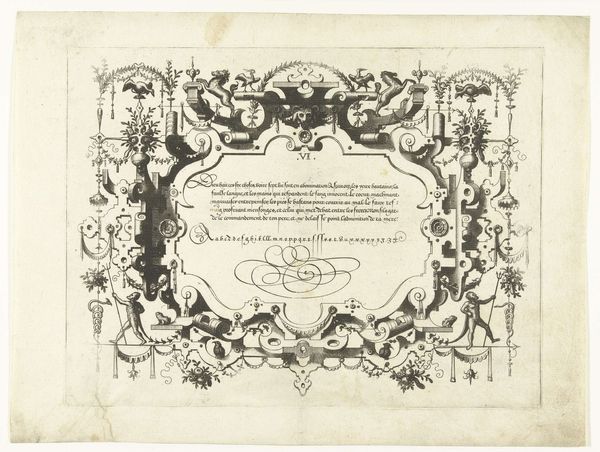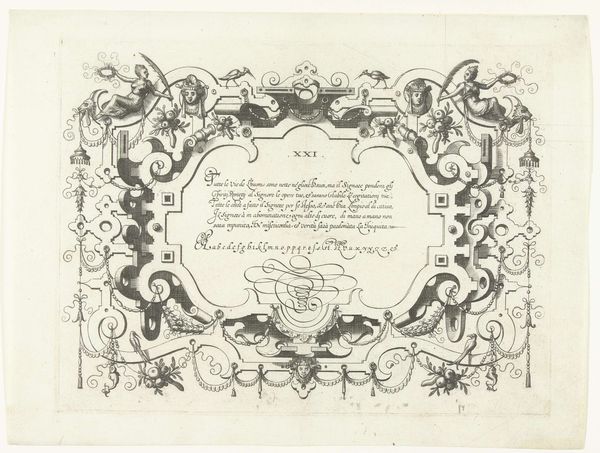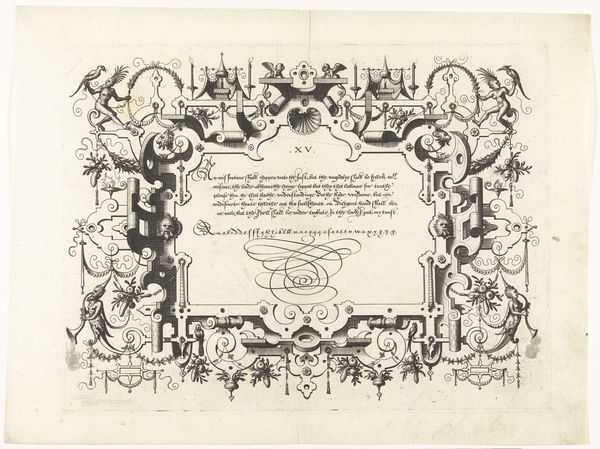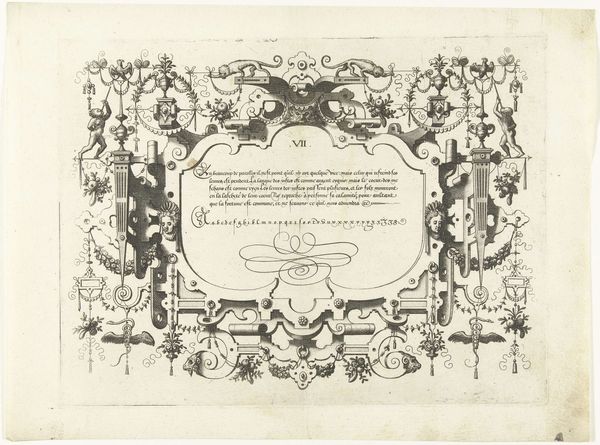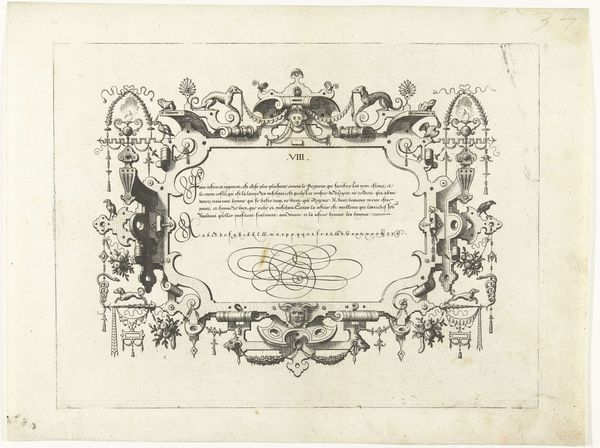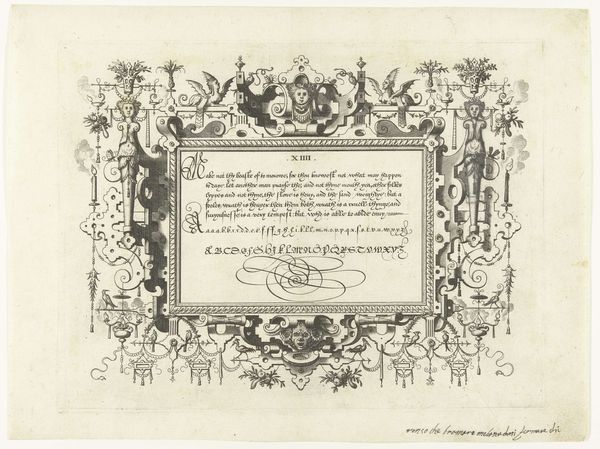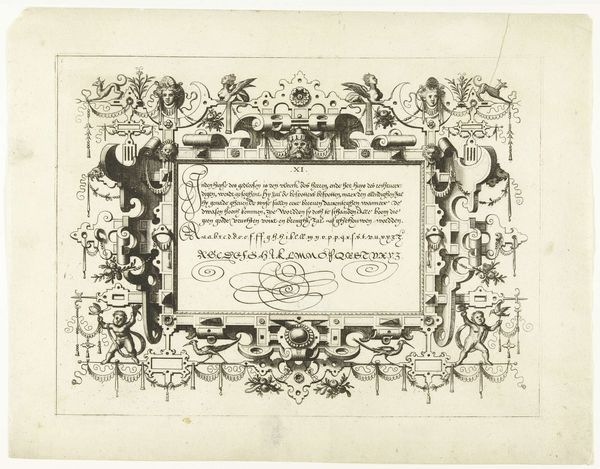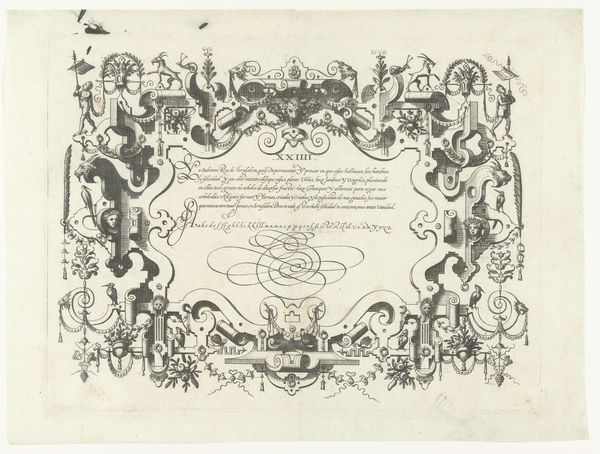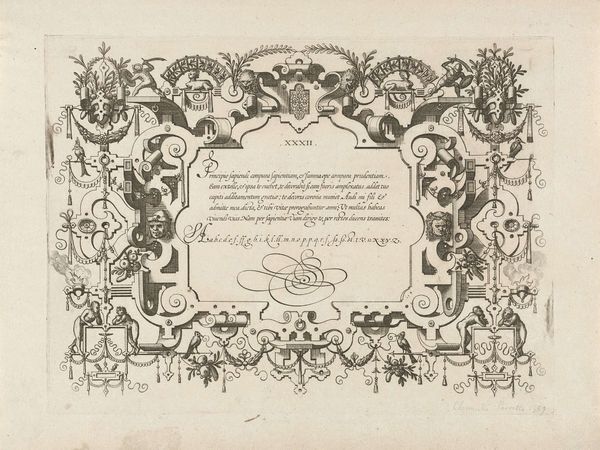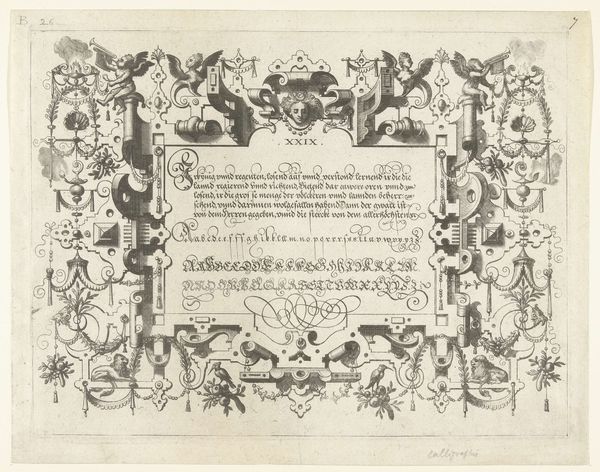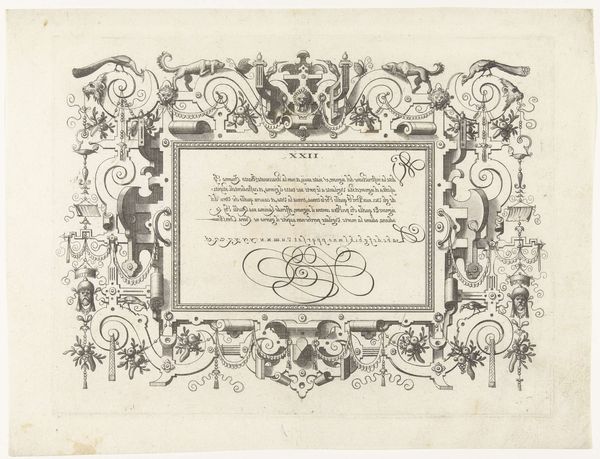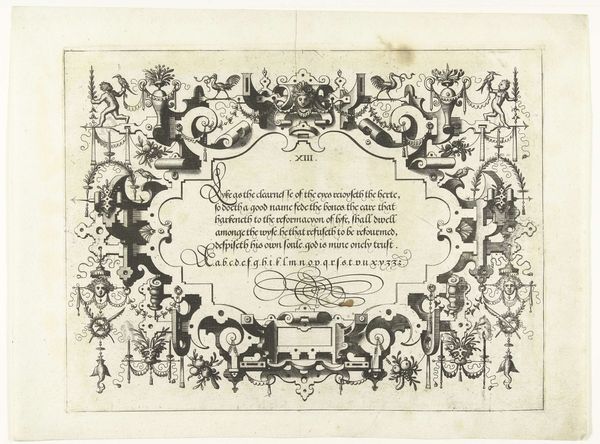
Cartouche met kalligrafie, links- en rechtsboven een kind met baldakijn 1569
0:00
0:00
johannesoflucasvandoetechum
Rijksmuseum
graphic-art, print, etching, engraving
#
graphic-art
#
pen drawing
# print
#
pen illustration
#
pen sketch
#
etching
#
old engraving style
#
11_renaissance
#
personal sketchbook
#
ink drawing experimentation
#
pen-ink sketch
#
pen work
#
sketchbook drawing
#
sketchbook art
#
engraving
#
calligraphy
Dimensions: height 214 mm, width 284 mm
Copyright: Rijks Museum: Open Domain
This is a 'Cartouche with calligraphy, with a child with a baldequin in the upper left and right corner' made by Johannes or Lucas van Doetechum. Cartouches, common in the 16th and 17th centuries, were elaborate frames typically used to highlight text or images. This particular cartouche, teeming with cherubic figures, garlands, and architectural motifs, exemplifies the ornate style prevalent during that period. But consider its function beyond mere decoration. Cartouches served as symbolic enclosures, drawing attention to the text within. The text in this cartouche has a lyrical, elegant quality. Calligraphy was not just about conveying information; it was an art form in itself, reflecting the scribe's skill, education, and cultural values. Think about the power of language during this era. In a time of limited literacy, those who could read and write held considerable social and cultural capital. The cartouche, then, operates on multiple levels. It's a visual feast, a showcase of artistic skill, and a frame that elevates the written word. This piece invites us to consider the intricate relationship between art, text, and power in the early modern world.
Comments
No comments
Be the first to comment and join the conversation on the ultimate creative platform.
